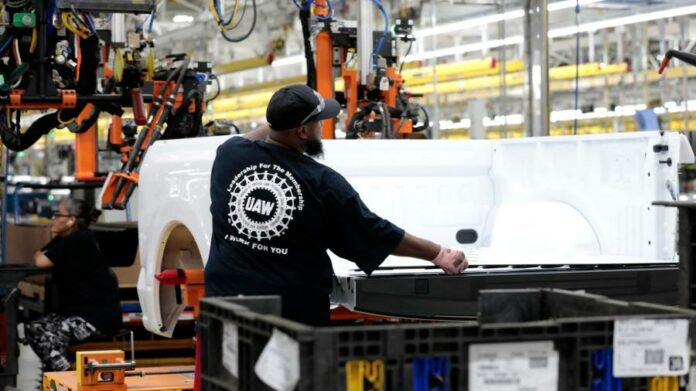The Federal Reserve’s efforts to stamp out high inflation will push the US unemployment rate up to at least 5.5 per cent as the world’s largest economy tips into a recession next year, according to a majority of leading academic economists polled by the Financial Times.
The latest survey, conducted by the Initiative on Global Markets at the University of Chicago Booth School of Business in partnership with the FT, suggests waning optimism that the central bank can tame price pressures without causing material job losses.
Despite Fed chair Jay Powell’s and other top officials’ insistence that a “soft or softish landing” is possible given the historically tight labour market, the bulk of the economists polled see a period of pain on the horizon, even as the central bank slows the rate of its interest rate increases and takes stock of how much more it needs to squeeze the US economy.
Of the 45 economists surveyed between December 2 and December 5, 85 per cent project that the National Bureau of Economic Research — the arbiter of when recessions begin and end — will declare one by next year.
While most of the economists expect the coming contraction to be shortlived — with gross domestic product growth still registering a 1 per cent gain by the end of next year — more than half are bracing for the unemployment rate to rise substantially from its current 3.7 per cent level to between 5.5 per cent and 6.5 per cent.
A handful of economists pencilled in an even more dire outcome, with the unemployment rate either closing in on or exceeding 7 per cent.
“A soft landing is extremely difficult and it almost never happens in history,” said Georgio Primiceri, a professor at Northwestern University who participated in the survey.
“I don’t think the Fed is going to need to push on the brakes with an extreme amount of pressure. They need to do it a little bit more and they can stop at some point, but it’s probably going to be too late to avoid a recession.”
The survey results come as the Fed is poised to step down to a half-point increase next week following four consecutive 0.75 percentage point rate rises, in a move that would lift the federal funds rate to a new target range of 4.25 per cent to 4.50 per cent.
According to the poll, more than 60 per cent of participating economists expect the Fed to raise its benchmark policy rate to at least 5 per cent as it seeks to get inflation back down to its 2 per cent target.
For nearly 20 per cent of the respondents, the fed funds rate will eventually peak between 5.5 per cent and 6 per cent, while an additional 5 per cent of those polled believe it will exceed 6 per cent. That is up from just 20 per cent of respondents in September who thought the peak rate would surpass 5 per cent.
An overwhelming majority see the central bank wrapping up its rate rises in or before the second quarter of next year and for the bulk of the economic effects to be felt in the latter half of 2023 or early 2024.
Meanwhile, the US housing market, which has already started to buckle under the weight of skyrocketing mortgage rates, is forecast to slump further as economic activity grinds to a halt. Most economists expect the Case-Shiller national home price index to decline 1 per cent next year, but the range of possible outcomes is wide. More than 60 per cent of economists who predicted a decrease in the price index estimated that the drop could exceed 10 per cent by the end of 2023.
Contrary to current investor expectations, 60 per cent of respondents expect the Fed to hold its nerve next year and not begin cutting interest rates at least until the first quarter of 2024, as top officials have signalled.
“The message the Fed has sent is clear: the restrictive policy will stay in place until inflation comes down,” said Ana María Herrera at the University of Kentucky, describing the probability the Fed reverses course by the end of next year as “rather low”.
At that point, “core” inflation — as measured by the personal consumption expenditures price index — is still expected to be elevated at 3.5 per cent. By December 2024, nearly half of the economists expect this inflation metric to have drifted below 3 per cent, although nearly a quarter say it is “somewhat” or “very” likely to be above that level at that point.
Brad DeLong, a survey participant at the University of California, Berkeley, said he is far more confident today that price pressures are not becoming entrenched in the economy, not least because expectations of future inflation still remain under control. The bigger concern, he said, is the Fed overreacting at this stage and causing unnecessary economic damage.
“The major risk is on the downside — that the Federal Reserve overdoes it and we wind up back in secular stagnation with interest rates back at zero and no one able to get the economy moving again.”










